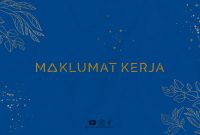Introduction
Understanding the concept of business casual attire is essential in today’s professional world. It is a dress code that strikes a balance between formal and casual, allowing individuals to present themselves in a relaxed yet professional manner. In this article, we will delve into the specifics of what is considered business casual and provide you with valuable insights on how to dress appropriately for different occasions.
Defining Business Casual
Business casual is a term used to describe a style of dressing that is less formal than traditional business attire, such as suits and ties, yet still maintains a professional appearance. It is a more relaxed and comfortable dress code that is commonly adopted in office environments that do not require strict formal attire.
Key Elements of Business Casual
When it comes to business casual, there are a few key elements to keep in mind to ensure you are dressing appropriately:
1. Tops
Opt for collared shirts, such as button-downs or polo shirts, as they are considered staples in business casual attire. Avoid loud patterns or graphics and instead choose solid colors or subtle patterns.
2. Bottoms
Khakis, dress pants, or skirts in a conservative length are ideal choices for business casual bottoms. Avoid jeans, shorts, or anything too casual or revealing.
3. Footwear
When it comes to footwear, opt for closed-toe shoes such as loafers, oxfords, or dressy flats. Avoid sneakers, sandals, or flip-flops, as they are considered too casual for a business setting.
4. Jackets and Blazers
A jacket or blazer is a great way to add a touch of professionalism to your business casual outfit. Choose a well-fitted blazer in a neutral color that complements your overall look.
5. Accessories
Accessories should be kept minimal and tasteful. A simple watch, belt, or necklace can add a polished touch to your business casual attire. Avoid excessive jewelry or accessories that may appear distracting or unprofessional.
When to Wear Business Casual
Business casual attire is suitable for various professional settings, including:
1. Office Environments
In many offices, business casual is the standard dress code. It allows employees to feel comfortable while maintaining a professional appearance.
2. Business Meetings
When attending business meetings or conferences that do not require formal attire, business casual is often a safe and appropriate choice.
3. Networking Events
Networking events often call for a more relaxed dress code. Opting for business casual attire showcases your professionalism while still allowing you to feel comfortable mingling with others.
4. Casual Fridays
Many workplaces have designated casual Fridays, where employees can dress more casually than usual. Business casual is often the go-to dress code for these days.
Maintaining Professionalism
While business casual allows for more flexibility in attire, it is important to remember to maintain professionalism in your appearance. Keep the following points in mind:
1. Personal Hygiene
Ensure you are well-groomed, with clean and tidy hair, nails, and overall personal hygiene. Avoid excessive cologne or perfume.
2. Fit and Tailoring
Make sure your clothing fits well and is tailored appropriately. Avoid overly tight or loose-fitting garments, as they can appear unprofessional.
3. Neatness
Pay attention to the overall neatness of your outfit. Avoid wrinkled or stained clothing, as it can give off a sloppy impression.
Conclusion
In conclusion, business casual attire strikes a balance between formal and casual dressing, allowing individuals to maintain a professional appearance while feeling comfortable. By adhering to the key elements of business casual and understanding when it is appropriate to wear, you can confidently navigate various professional settings. Remember to always prioritize professionalism in your appearance to make a positive impression in the business world.




